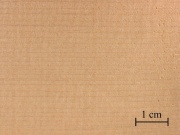Difference between revisions of "Port Orford cedar"
Jump to navigation
Jump to search
(username removed) |
(username removed) |
||
| Line 18: | Line 18: | ||
== Authority == | == Authority == | ||
| − | * | + | * G.S.Brady, ''Materials Handbook'', McGraw-Hill Book Co., New York, 1971 Comment: p. 166 |
* ''Dictionary of Building Preservation'', Ward Bucher, ed., John Wiley & Sons, Inc., New York City, 1996 | * ''Dictionary of Building Preservation'', Ward Bucher, ed., John Wiley & Sons, Inc., New York City, 1996 | ||
| − | * | + | * External source or communication Comment: West Coast Lumbermen's Association, Seattle, Wash.; air-dry weight = 29 pcf |
[[Category:Materials database]] | [[Category:Materials database]] | ||
Revision as of 06:32, 24 July 2013
Description
A lightweight, strong-smelling wood obtained from a large cedar tree Chamaecyparis lawsoniana native to the Pacific coasts of California and Oregon. First lumbered in 1854, the yellowish wood has a fine texture and is strong. It is used for millwork, plywood, flooring, interior finish, and storage chests.
Synonyms and Related Terms
white cedar; Chamaecyparis lawsoniana
| Density | 29 pcf |
|---|
Authority
- G.S.Brady, Materials Handbook, McGraw-Hill Book Co., New York, 1971 Comment: p. 166
- Dictionary of Building Preservation, Ward Bucher, ed., John Wiley & Sons, Inc., New York City, 1996
- External source or communication Comment: West Coast Lumbermen's Association, Seattle, Wash.; air-dry weight = 29 pcf
